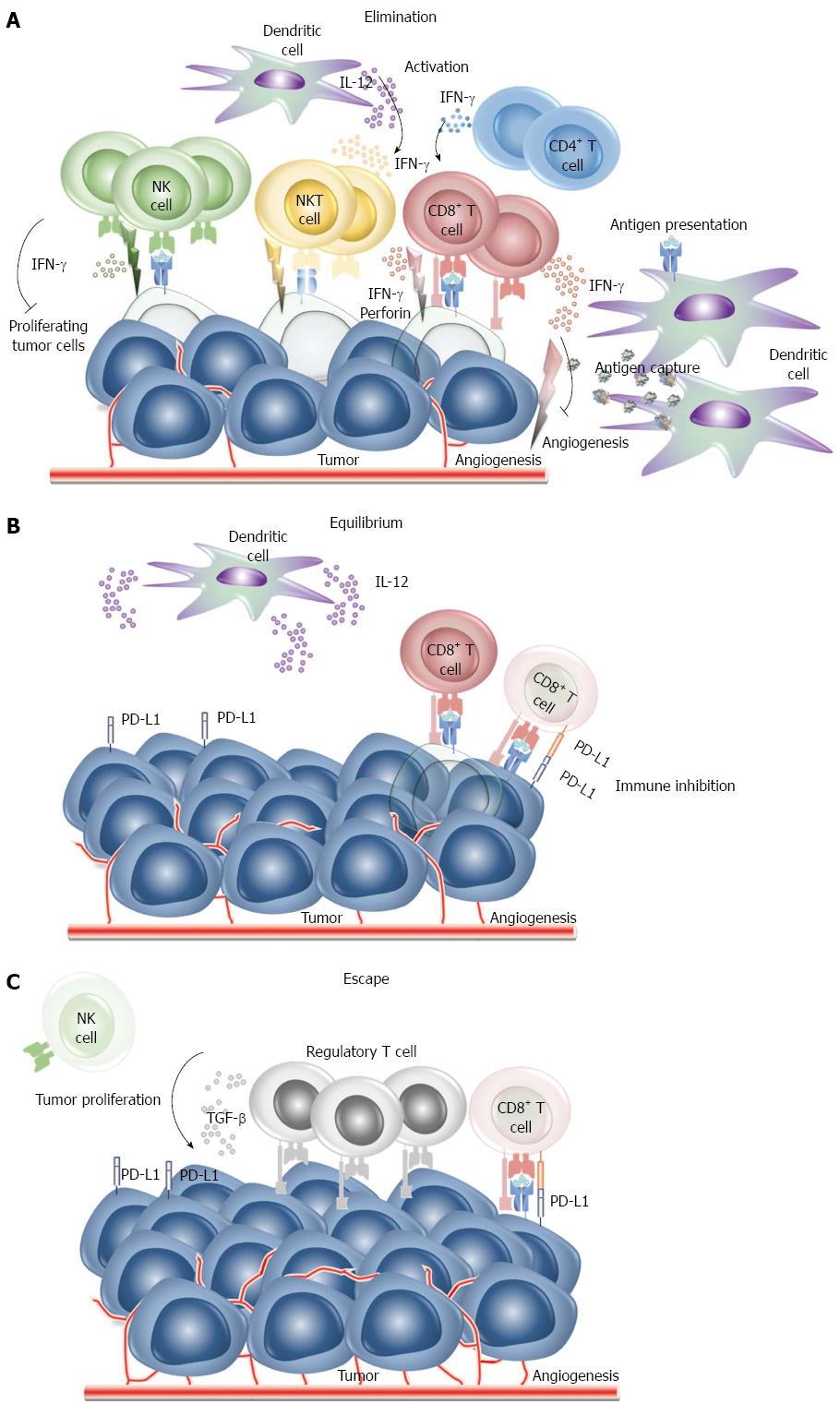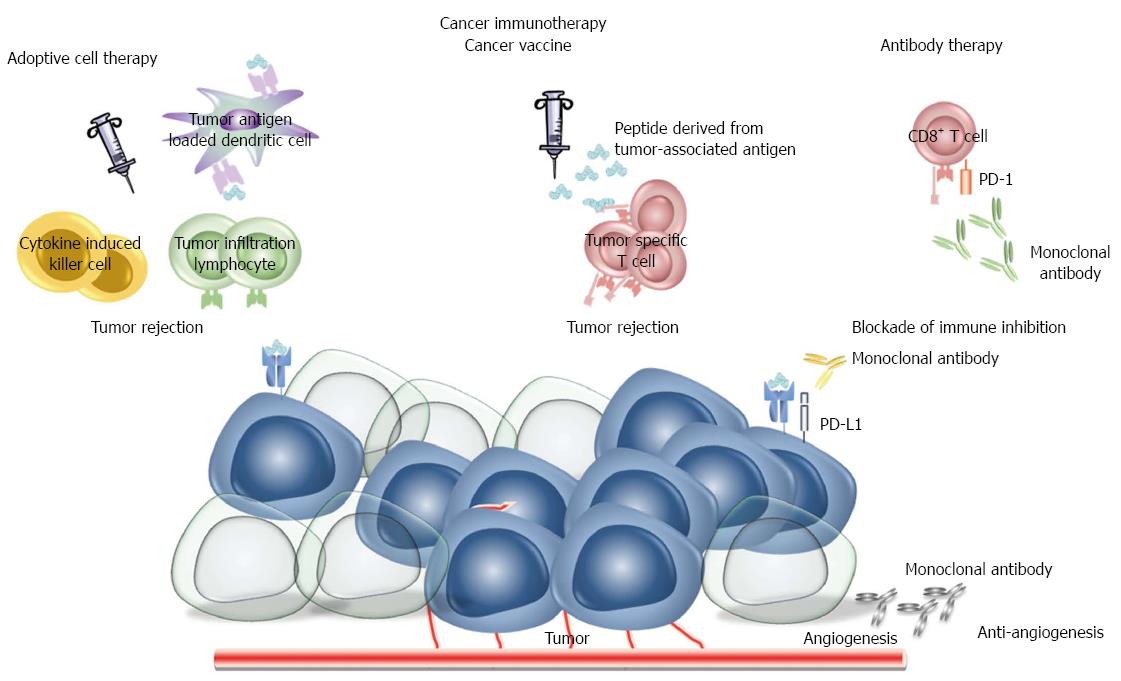Copyright
©2014 Baishideng Publishing Group Co.
World J Gastroenterol. Feb 21, 2014; 20(7): 1657-1666
Published online Feb 21, 2014. doi: 10.3748/wjg.v20.i7.1657
Published online Feb 21, 2014. doi: 10.3748/wjg.v20.i7.1657
Figure 1 Cancer immunoediting phases.
A: Phase 1: Elimination. Tumor cells are recognized by innate and adaptive immune cell and are destroyed before they can become a clinical malignancy. Modified after Dunn GP[69]; B: Phase 2: Equilibrium. If tumor cells are not destroyed in the elimination phase, the tumor may enter an equilibrium phase. Genetic change and/or resistant to immune detection occur in the equilibrium phrase and tumor cells are maintained chronically. Modified after Dunn GP[69]; C: Phase 3: Escape. The tumor microenvironment allows that tumor cells to grow and change to become poorly immunogenic. The tumor microenvironment becomes immunosuppressive. Modified after Dunn GP[69]. NK: Natural killer; PD: Programmed death; IFN: Interferon; IL: Interleukin.
Figure 2 Cancer immunotherapy.
Immunological approaches to cancer therapy are based on use of cytotoxic immunocytes (cytokine induced killer cells, tumor infiltration cells, tumor antigen loaded dendritic cells), cancer vaccines, monoclonal antibodies. Therapeutic vaccines enhance pre-existing immunity and lead to a more robust antitumor immune response whereas monoclonal antibodies are used to inhibit critical molecules for tumor growth and survival. PD: Programmed death.
- Citation: Matsueda S, Graham DY. Immunotherapy in gastric cancer. World J Gastroenterol 2014; 20(7): 1657-1666
- URL: https://www.wjgnet.com/1007-9327/full/v20/i7/1657.htm
- DOI: https://dx.doi.org/10.3748/wjg.v20.i7.1657














